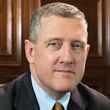President's Message: Tapering and Other Key Topics in U.S. Monetary Policy
The Federal Open Market Committee (FOMC) considers a wide range of information when assessing the state of the economy and deciding on the appropriate stance of monetary policy. In this article, I address some topics that have been of particular interest recently.1
One welcome development so far this year has been that the Fed's tapering process has gone relatively smoothly in terms of market reaction, whereas the "taper tantrum" during the summer of 2013 had suggested otherwise.2 The current asset purchase program began in September 2012, and last summer there were hints that the FOMC might start to pull back on its pace of purchases. As a result, long-term U.S. interest rates rose considerably—by about 100 basis points. The possibility of tapering also had global ramifications as capital flowed out of emerging markets and into the U.S. Some of the effects were reversed during the fall when the committee decided to delay the tapering. The FOMC ultimately decided at its December meeting to reduce the pace of its asset purchases beginning in January. The fact that the tapering has been relatively smooth so far is encouraging for the Fed as we continue the process of eventually returning to normal monetary policy.
Another important topic of late has been the relative softness in U.S. gross domestic product (GDP). In the first quarter, real GDP decreased at an annualized rate of 2.9 percent, according to the Bureau of Economic Analysis' latest estimate. Did the extended hard winter create a temporary weather-related drag, or did the economy slow down on a more persistent basis over the winter months? In my view, the weakness in the first quarter of 2014 can be attributed mostly to weather and inventory adjustment effects. The second half of 2013 was fairly strong in terms of GDP growth, and I expect sustained growth in the remaining quarters of this year. While the first quarter looks like it will be an anomaly, the FOMC is watching the data closely to see if that story holds.
The FOMC also continues to keep a close eye on inflation and on developments in the labor market. While inflation has been running below the FOMC's 2 percent target over the past couple years, in recent months it has been moving back toward the target. Regarding the labor market, the FOMC has been particularly concerned about high unemployment in the U.S. since 2008-2009. The unemployment rate peaked at 10 percent in October 2009. It has since fallen to 6.1 percent, according to the June 2014 reading.
A key consideration for the health of labor markets concerns how to interpret recent changes in labor force participation (LFP). LFP has been in decline in the U.S. since 2000, largely due to the aging population. In my view, demographic factors—rather than cyclical factors—account for most of the changes in participation following the financial crisis and recession. Therefore, the falling U.S. unemployment rate provides a good signal of an improving labor market.3
One other topic of particular note is that emerging markets have been critical of U.S. monetary policy in recent years, especially during the taper tantrum. The Federal Reserve Bank of Kansas City's Jackson Hole Economic Policy Symposium in August 2013 covered issues surrounding global capital flows and the impact of U.S. monetary policy on emerging markets. The standard view on this topic is that with flexible exchange rates, free capital flows and independent monetary policy in each country, the global equilibrium is about as good as possible without international monetary policy coordination. That is, the gains from such coordination would be small. An alternative view is that there may be some unnecessary volatility in the global macroeconomic equilibrium due to U.S. policy; however, this outcome would occur only if the U.S. is interpreted as not following good policy.4 This is one way to frame the emerging markets' critiques, given that whether the U.S. is pursuing the right monetary policy or not is somewhat oblique in the current circumstances. The Fed has pursued several unconventional policies while the policy rate has been near zero, making it much more difficult during the current era to describe policy as a commitment to a monetary policy rule. As a result, reading the signals coming out of the U.S. has become more difficult, possibly generating unnecessary volatility in global financial markets. While there is some room for debate on this topic, I agree with the standard view, in which the scope for international monetary policy coordination to improve the global macroeconomic outcome is limited.
Endnotes
- This column is based on my article in the June 2014 edition of the OMFIF (Official Monetary and Financial Institutions Forum) Bulletin, "Smooth Ride So Far for U.S. Tapering." Vol. 5, Ed. 6, pp. 8-9. [back to text]
- See my speech on May 16, 2014, in Little Rock, Ark., "A Tame Taper." See http://research.stlouisfed.org/econ/bullard/pdf/Bullard-LittleRock-16-May-2014-final.pdf. [back to text]
- See my column in the April 2014 issue of The Regional Economist, "The Rise and Fall of Labor Force Participation in the U.S." Vol. 22, No. 2, p. 3. [back to text]
- See my speech on April 7, 2014, in Los Angeles, "Two Views of International Monetary Policy Coordination." See http://research.stlouisfed.org/econ/bullard/pdf/Bullard-APBO-USC-Marshall-April-7-2014-Final.pdf. [back to text]
Views expressed in Regional Economist are not necessarily those of the St. Louis Fed or Federal Reserve System.
For the latest insights from our economists and other St. Louis Fed experts, visit On the Economy and subscribe.
Email Us


